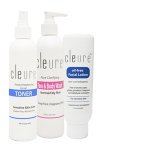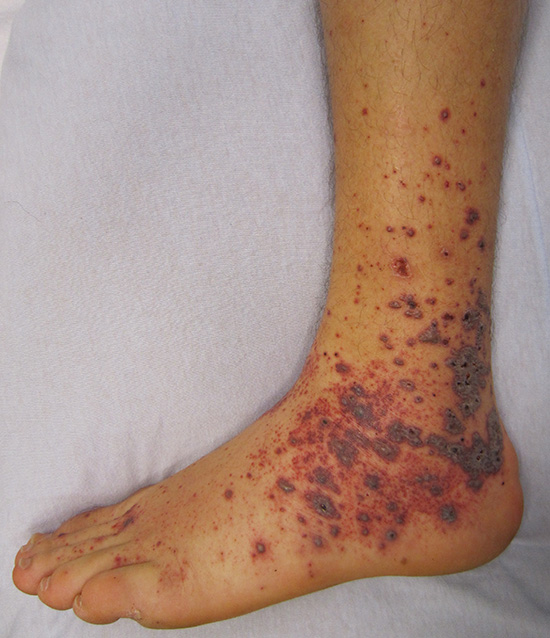Symptoms and Treatments for Rosacea
Learn more about symptoms and treatments for rosacea and discover which natural remedies for rosacea can provide you with the most noticeable relief without causing further skin irritation.
What is rosacea? Rosacea is an embarrassing and annoying chronic skin condition which millions of people have and do not realize it.
Rosacea is not life threatening, but can create a lot of self consciousness among those who are suffering from it, because the symptoms show on your face!
Rosacea tends to occur in people from Celtic and European descent, although people from all ethnicities can develop it. Women are three times more likely to develop rosacea, and medical science does not yet know what causes it.
Symptoms and Treatments for Rosacea - What Do Symptoms Look Like?
The main symptoms of rosacea are facial redness, but can include other symptoms as well.
- Regular outbreaks of redness and facial flushing
- Facial swelling
- Spider veins on the face
- Bumps, nodules and pimples
- Red eyes that feel like they have sand in them
- Thickening of the facial skin
- An enlarged, red nose
Symptoms and Treatments for Rosacea - How Symptoms Develop and Progress
Rosacea symptoms usually start with recurring outbreaks of redness or flushing. Rosacea is most common on the nose, cheeks or forehead, but can also affect other parts of the body like the eyes, ears, scalp, chest or neck.
These flushing outbreaks are also known as Prerosacea and usually begin in the mid twenties or early thirties.
As rosacea develops, other rosacea symptoms can appear such as a swollen, warm face which occurs when the blood vessels under the skin become inflamed.
This form of rosacea, also known as Vascular rosacea can also cause the appearance of spider veins on the face. This form of rosaceas to be more common in women.
As rosacea becomes more severe, it can form pimples, bumps and enlarged blood vessels which look like acne, but which do not cause blackheads or the typical acne piples. This is known as Inflammatory rosacea or Acne rosacea.
In the most severe cases of rosacea, the skin becomes permanently reddened and thickened, which is also known as Phymatous rosacea. This type of rosacea can cause the nose to become red, bulbous and inflamed.
When rosacea affects the nose, this is known as Rhinophyma. Thankfully, this does not happen too often. If you think you have rosacea, please see a doctor so that you can begin rosacea treatment to control the symptoms.
A newly classified subtype of rosacea known as Neuropathic rosacea can be more severe, and includes symptoms of severe facial burning and pain which happen more than 30 minutes.
These symptoms usually appear in response to some kind of rosacea trigger such as a food, hot drink, or chemicals in soaps or personal care products. In severe cases the burning and pain can begin to occur even without a trigger, and can even become permanent.
Symptoms and Treatments for Rosacea - Rosacea Medication
These are the rosacea medications and treatments that doctors use most often when treating rosacea symptoms.
- Topic antibiotics such as metronidazole
- Topical medications such as azelaic acid
- Oral antiobiotics such as tetracycline
- For allergy prone rosacea sufferers, antihistamines can reduce flushing even though it has no direct effect on rosacea.
- Medications for flushing and burning such as beta blockers, clonidine, or mirtazapine
Symptoms and Treatments for Rosacea - Laser Treatment
Rosacea laser treatment has shown promise in treating more advanced cases of rosacea. Lasers can help reduce thickening, reddening of the skin and spider veins. This is an expensive solution and is not permanent so will require regular follow up treatments.
IPL Lasers and Single Wavelength Lasers use light to penetrate the first layer of skin and heat the capillaries so that they are damaged and therefore absorbed by the body's natural self healing systems.
CO2 Lasers are used to remove excess skin tissue that has formed in the advanced stages of rosacea, or to vaporize thickened skin tissue. Learn more about Rosacea Laser Treatment.
Symptoms and Treatments for Rosacea - Lifestyle Changes
There are many lifestyle changes that you can make to help minimize your rosacea symptoms, such as avoiding things which trigger your rosacea.
Learning to listen to your skin, and to what happens when you are in different environments, can go a long way towards helping you to calm your rosacea outbreaks and get the symptoms under control.
Some of the common rosacea triggers include:
- Hot drinks
- Spicy foods
- Acidic foods
- Wind
- Sun exposure
- Heavy aerobic exercise
- Extreme weather conditions that are too hot or too cold
- Irritating chemicals in your laundry detergents, soaps, shampoos and personal care products. Please see our Safe Cosmetics Guide for more information about common ingredients which can cause skin inflammation.
You can learn more lifestyle tips to control your rosacea here at rosacea cures.
Symptoms and Treatments for Rosacea - Natural Remedies for Rosacea
Some of the symptoms and treatments for rosacea can be improved by using some of these natural remedies for rosacea.
Eat an alkalizing diet with lots of vegetables and fruits, and reducing your intake of acidic foods.
Gentle facial massage can improve the circulation and help normalize blood flow.
Facial exercise can improve your skin tone and help your body to more quickly recover from a rosacea outbreak.
Hypoallergenic skin care products can help reduce your skin's exposure to allergens, although you need to choose the right kind in order to also avoid irritating chemicals in the ingredients.
Diluted apple cider vinegar is a simple and natural cure for rosacea which has helped many people to reduce their rosacea symptoms. You can dab on your face and also take internally several times a day.
Zinc Oxide can help protect against the sun, cover the facial redness and protect sensitive skin from the environment. Zinc oxide is found in some hypoallergenic sunscreen formulations.
Jojoba oil is soothing to the skin, and may be one of the few moisturizers that will not irritate sensitive rosacea skin.
MSM and Silibinin, the active ingredient blessed milk thistle, are two nutritional supplements which have shown promise for treating rosacea symptoms.
Symptoms and Treatments for Rosacea - More Information
There is a new guide book out that offers a detailed natural health treatment program for rosacea. This looks quite promising and is written by a fellow rosacea sufferer who no longer has symptoms after developing and using this program. See the Rosacea No More program.
Home > Rosacea Cures > Symptoms and Treatments for Rosacea









New! Comments
Share your thoughts about what you just read! Leave me a comment in the box below.